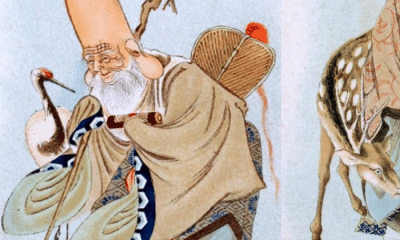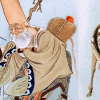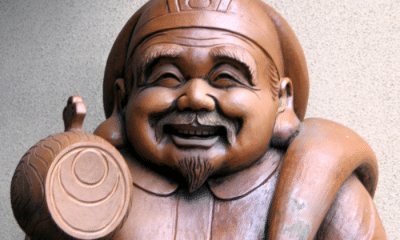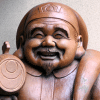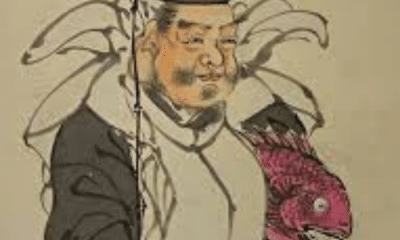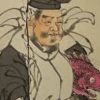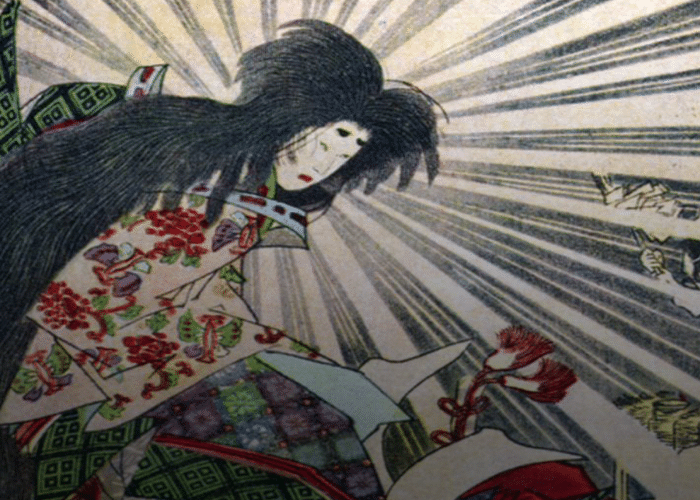
Japanese
Inari Okami: The Japanese Spirit of Success
Inari Okami: The Japanese Spirit of Success
Inari is one of the most popular Japanese deities, but they are also one of the most difficult to define. Read more to learn why Inari is worshiped in many different ways at thousands of sites around Japan!
Of the thousands of kami revered in Shinto, perhaps none is as beloved as Inari. A deity of prosperity and good fortune, Inari’s cult spread throughout Japan relatively early in the country’s history.
While Inari has more shrines and followers than any other Shinto kami, however, very few Japanese people agree on exactly how they view Inari.
Inari can be seen as a kindly and beautiful maiden goddess. They can be a powerful craftsman with a hammer. They can be an androgynous bodhisattva, a withered old man, or even a fox.
Inari’s long and unique history has made them not only one of Shinto’s most popular figures, but also its most personal. Each person and community has been encouraged for hundreds of years to revere a version of Inari that is personal and meaningful to them.
From the rice paddies of the 8th century to modern corporate offices, Inari has taken on many forms and functions to become the patron of success in Japanese culture.
Inari as an Agricultural Deity
The earliest form of Inari was as a god, or goddess, of agriculture.
Inari’s name shares part of its kanji with the word for rice, making it clear that the deity had agricultural significance from an early period.
While the first recorded appearance of Inari, the foundation of a shrine, is recorded in the year 711 AD, most historians believe that the deity emerged long before that time. They were likely revered as an agricultural kami by the late 5th century and may have existed as a local deity before then.
Because Inari developed before Japanese religion was uniform throughout the country, they appear in many forms depending on the context.
As an agricultural deity, Inari is most often seen as a beautiful goddess. They may also appear as an old man carrying a bag of rice, however.
Because Inari’s name comes from the phrase “carrying rice,” they were most closely associated with Japan’s staple food crop. Generally appearing as a benevolent deity, Inari was believed to ensure a plentiful harvest.
Inari quickly became associated with other forms of agricultural prosperity, however. They were soon linked with the cultivation of tea, another staple of the Japanese diet, and eventually with all grains and the products made from them, such as sake.
Inari’s role as a benefactor of Japan’s most important crops allowed the deity’s cult to spread throughout Japan relatively quickly. As an agricultural deity, they were important to people in all regions of the country.
By the 9th and 10th centuries, Inari was already of such great importance that the emperors of the time recognized them as a patron and protector of the nation. Such a high profile also meant that Inari would not remain a strictly agricultural deity.
Changing Views of Prosperity
By the Edo period, Inari had become so widespread and well-known that they were no longer the patron deity of agriculture alone.
Craftsmen of all types began to see Inari as an important deity in their own work. Blacksmiths, sword makers, and other metalworkers particularly embraced Inari as their patron deity.
Historians believe that this expansion of Inari’s cult was largely influenced by changing social, economic, and political systems during the Edo period.
During the Tokugawa Shogunate, the country’s system of tax collection and record keeping was entirely rewritten. They began to assess the country’s wealth based on a gold standard rather than the traditional measures of grain.
This meant that prosperity was no longer measured in crop yields, but in metal. Inari and their cult evolved as the Japanese view of wealth changed.
While the agricultural deity had been associated with all the products made from grain, this new measure of success linked them to all the products made from metal. Weapons, tools, and household goods all became symbols of the prosperity Inari brought.
As the deity of metal, Inari was usually seen in a male aspect. The female Inari, however, continued to be popular among farming communities.
As Japan became increasingly industrialized, the role of Inari continued to be adapted to fit the culture’s definition of prosperity.
As Inari became associated with metalworking, and thus the samurai culture of the Edo period, most feudal lords included a shrine to Inari in their households. They came to be seen as a patron of each lord and his family, and as the people of these households moved and took on new roles they took their protective deity with them.
As Inari’s cult spread, the deity came to symbolize prosperity and good fortune in whatever form the local culture defined it.
They were the patron of fishermen by the coast hoping for a good catch. Because shrines began to spring up in poorer sections of Japan’s growing cities, they attracted the prayers of the actors and prostitutes who lived there.
In the city of Edo, Inari was thought to prevent fires from breaking out. In the country, where they were still largely associated with agriculture and fertility, mothers prayed for healthy children.
As a deity of success and good fortune, Inari has continued to evolve into the present day.
After the Meiji period, increased industrialization and business interests made Inari a corporate deity. Many companies incorporated Inari’s name and iconography into their own and have shrines within their corporate offices.
In modern Japan, Inari is as likely to be seen as a deity of finance and industry as they are to be linked to rice paddies and sake production. As Japan’s definition of wealth has changed, Inari has filled the role of its patron.
The Personal Inari
Because Inari has fulfilled so many roles throughout Japanese history, they are often seen as one of the culture’s most personal deities.
Many scholars credit this to the fact that Inari’s worship developed before the Japanese religion was uniform. When Inari first emerged as an important deity, each region and even town would have its own version of each god.
While many gods were unified through written legends, Inari remained more autonomous. Although they have been worshiped for at least 1,500 years, there are virtually no widespread myths that feature Inari in any definite form.
This meant that, while other kami were defined by a particular narrative in their characterization and attributes, people retained more freedom to imaging Inari in any way they wished. According to one Shinto priest, a hundred different people would have a hundred different views about Inari’s appearance, behavior, and powers.
This idea of the personal Inari, or watashi no O-Inari-sama was not only influenced by Shinto beliefs. As the deity was integrated into Buddhism, the idea of a changeable and personal Inari remained.
According to a Buddhist priest:
It [Inari] is like your own mother, it grants your wishes. In times of illness when even a doctor cannot cure you, you have no alternative but to ask Inari. Buddhas have various ranks; Dakiniten [one of Inari’s many other names] is at the ten (deva) level, the level closest to that of humans. So Inari has very close relations to people.
-Karen A. Smyers, “My Own Inari”: Personalization of the Deity in Inari Worship, Japanese Journal of Religious Studies 23 (1996)
Because Inari is so personalized, modern images and practices continued to depict them in many different ways. As in the past, Inari can be male or female, young or old, and have a variety of different attributes and symbols.
Connections to Other Gods
Another reason Inari is seen in a variety of ways is that they are linked to a large number of other deities and kami.
While Inari has no set mythology of their own, they are often associated with the legends of other kami. These kami are often seen as different aspects of Inari.
The deity is sometimes thought of as a three-part god called Inari sanza. Sometimes there are five aspects of this being instead, Inari goza.
When Inari is thought of as having different aspects, however, the identification of their parts is as varied as the way in which they themselves are seen. Several characters from both Shinto and Buddhist traditions are sometimes conflated with or seen as part of Inari.
These sometimes include:
- Uke Mochi: In some stories, a male Inari was once married to the murdered goddess of food and took over her position. In others, Uke Mochi was an aspect of Inari.
- Izanagi and Izanami: The creator god and goddess are sometimes associated with Inari. In addition to mankind and the land, they also created the first grains.
- Dakiniten: This is the Japanese name for Dakini, a representation of the divine feminine spirit in some branches of Buddhism.
- Benzaiten: Also from a Buddhist source, this god is one of the Seven Lucky Gods. They share aspects of prosperity, good fortune, and plenty.
- Uka-no-Mitana: A male deity in classical Shinto mythology, he was associated with rice and cultivation.
- Toyouke: This goddess developed at roughly the same time as Inari and was similarly associated with both agriculture and industry.
- Ninigi: The first emperor of Japan and a grandson of Amaterasu, Ninigi established the first organized agricultural practices.
- Sarutahiko: He is the leader of all earthly kami and one of the most powerful spirits.
- Ame-no-Uzume: The joyful dawn goddess was responsible for bringing Amaterasu out of her self-imposed confinement, thus returning the sun and order to the world.
Inari and the Foxes
No god is connected to Inari as closely, however, as the kitsune.
These foxes are believed to be yokai, or supernatural beings. They can be either benevolent or mischievous.
The kitsune were long believed to be servants and messengers of Inari. As exceptionally intelligent animals who were often seen near human settlements, ancient people often associated foxes with supernatural beings.
The connection between Inari and these fox spirits was strengthened by the introduction of Buddhist traditions into their cult.
In Japanese Buddhism, the divine female spirit is often represented by a fox. Dakiniten, the personification of this feminine energy, is sometimes shown in art riding a white fox.
This strengthened the association between the kitsune and Inari, both because of Inari’s portrayals as a powerful female being and because Dakiniten is sometimes seen as an aspect of them.
According to tradition, the kitsune can be distinguished from ordinary foxes because they are typically pure white and have multiple tails. Because it is sometimes difficult to see them, however, people believed that it was safest to treat all foxes as possible avatars of Inari.
Only some of the kitsune were Inari’s messengers, however.
Because Inari is a benevolent deity, only those kitsune who were similarly kind and helpful were associated with them. These celestial zenko were opposed to the yako, or field foxes, who tended to be tricksters.
Because the good kitsune served the deity, it became common practice for offerings that were appealing to foxes to be left at Inari’s shrines. Fried tofu was considered a favorite food of the kitsune, so much so that many dishes that contain it are named after Inari or the kitsune today.
Foxes were also incorporated into Inari’s shrines in honor of their messengers. A pair of stylized fox statues, representing male and female, are commonly found at the entrance to Inari’s shrines in place of the more common lion guardians.
Over time, the connection between Inari and their messengers became more pronounced. In some modern representations, Inari is often depicted as a fox or a kitsune in human form.
When associated with the kitsune, Inari always takes a female form. This is likely because the kitsune themselves are seen as female and as symbols of feminine divinity.
Shrines
Although Inari has no definite mythology, they have remained one of the most influential and popular deities in Japanese folklore. According to some experts, only ancestor worship in Japan has more varied and numerous places and forms of worship.
Inari’s popularity and widespread appeal can be seen clearly in the prevalence of their shrines. No other single deity has as many sacred sites in Japan.
In fact, a 1985 survey found that 32,000 shrines were dedicated to Inari on the Japanese islands. This accounted for over one-third of all the Shinto shrines in the country, a religion that believes in thousands of individual kami.
Even more remarkably, this survey only included the dedicated shrines that had at least one full-time priest. Tens of thousands of additional Inari shrines can be found along roadsides, in fields and forests, in homes and offices, and even within Buddhist temples.
Red torii gates commonly lead to the entrance of Inari’s shrines. The red gates are so commonly seen throughout Japan that their color has become associated with Inari.
These are typically flanked by at least one set of fox statues. Even the smallest roadside shrines generally include a pair of small foxes.
At larger shrines, it is common to see vendors selling food to be left as offerings at the shrines. One of the most popular is Inari-zushi, a sushi roll of fried tofu said to be loved by the kitsune that often has pointed corners to resemble a fox’s ears.
In the past, it was common for temple priests to keep live foxes at the shrines to represent Inari and their messengers. Modern animal safety and conservation practices have eliminated the practice of venerating live animals, however.
Instead, stuffed foxes and small carvings are sometimes left at the shrines by devotees.
Inari shrines take on a variety of forms. Some are small altars in secluded areas or within private homes while others are sprawling complexes.
The oldest and most elaborate Inari shine in the country is located in Fushimi, part of the city of Kyoto. Founded in the 8th century, it has been slightly moved and rededicated many times in its long history.
The most famous aspect of the Fushimi shrine is its long rows of torii gates that stretch up a winding mountain path.
During the Edo period, it became popular for wealthy patrons to donate a set of gates to the shrine in order to win Inari’s favor. As a result, over a thousand torii along the main trail alone.
Altogether, the Inari shrine and the many smaller shrines associated with it encompass an area of over four kilometers.
The shrine is one of the most popular religious sites in Japan. Over the three-day New Year’s celebrations, over two million visitors make their way to the shrine.
One reason the Fushimi shrine enjoys such prominence is that it is the only official pilgrimage site for Inari’s worshippers in all of Japan. Although there are tens of thousands of shrines, Fushimi is the only site with a pilgrimage tradition.
This is likely because Inari is seen as such a personal deity. Each shrine essentially honors a different version of Inari, leaving little reason for devotees to visit another site.
Fushimi has the distinction, however, of being the first official shrine to Inari dedicated by the state. Because of its history, it is a central place of worship for all followers of the deity.
The Many Aspects of Inari
Inari is one of the oldest and most well-loved deities in Japanese folklore. They are also one of the most difficult to define.
Inari’s worship began sometime before the 8th century. They were originally an agricultural deity who provided prosperity in the form of rice, tea, and food products.
As Japan became more industrialized, the concept of prosperity changed. Inari came to encompass craftsmen, smiths, finance, and eventually almost any form of success and good fortune.
Because Inari developed early with no set mythology, different populations formed their own versions of the deity. They could be any gender or age depending on location, time, and specific function.
Today, the concept of a personal Inari is a central part of the deity’s worship. Both Buddhists and followers of Shinto are encouraged to venerate a version of Inari, or another deity as an aspect of Inari, that suits their needs.
As a result of this mass appeal and varied view, Inari has more shrines than any other Shinto deity. Over one-third of Japan’s Shinto shrines are dedicated to Inari.
Although Inari is seen in a variety of ways, certain aspects of their shrines are consistent. Red torii gates have become almost synonymous with the veneration of Inari.
Both large temples and small altars also feature imagery of foxes. Representing the kitsune spirits who are Inari’s messengers, the fox is so closely linked with Inari’s worship that the deity is sometimes shown in fox form as well.
With tens of thousands of holy sites, Inari is one of Japan’s most popular and prominent deities. Their changeable image and lack of a set narrative has made them more relevant because they can be worshipped by virtually any person for almost any reason.


